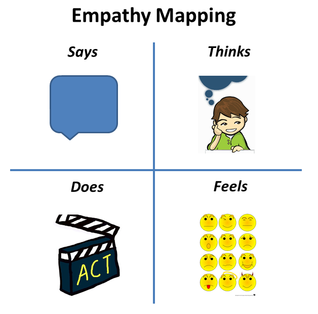
They’re two words so mundane it’s difficult to grasp the significance. If “design” implies to you simply an activity in building something, then “Design Thinking” sounds like nothing special. My experience tells me otherwise.
Perhaps the challenge to convey breakthrough potential is why we were schooled at IBM to always be mindful of the branding. We weren’t just practicing design thinking, we were applying IBM Design Thinking. We were taking proven practices from various disciplines and shaping them to work at the speed and scale of one of the world’s largest companies. It started in 2013 as an internal transformation targeting the core of the company’s culture and philosophy. Today, IBM is telling that story and sharing their framework with the world.
I founded Breathe Water with the dream of using techniques practiced in my corporate career to help small businesses, communities, and non-profits solve their weightiest problems and seize the biggest opportunities. By publishing the IBM Design Thinking framework, Big Blue is making it easier for believers like me to bring that experience to the world.
From the fall of 2014 until my retirement from IBM at the end of 2015, I was fortunate to be part of that first wave of fundamental change inside IBM. As Transformation Leader for an initiative reshaping how we serviced clients across our $3B/year North America Application Management Services business, I knew we needed Agile techniques to improve our time to value for new outsourcing clients. I was exposed to IBM Design Thinking by accident, while seeking internal consultants to help us with Agile.
Those of us leading the transformation recognized both the risk and opportunity in what we had undertaken. Agile might help us deliver incremental value faster and with less waste, but it wouldn’t radically change our ability to find the greatest opportunities and most sustainable ways to deliver that value.
With IBM Design Thinking, we were able to pull together a strong, cross-functional team and collaborate to identify the highest impact outcomes we could achieve. We defined these using the Design Thinking technique called Hills. We also identified key users and surfaced their greatest needs using techniques like Sponsor Users and Empathy Mapping. We deepened our insights by mapping out as-is and to-be scenarios, and we tested those beliefs constantly with Playbacks.
Outside of my professional career, I’ve been an activist and engaged volunteer in my community for over a decade. I’ve worked with local elected officials, citizen groups, and non-profit organizations to tackle difficult problems and embrace exciting opportunities.
Design Thinking is a powerful practice to dramatically enhance the ability of such groups to achieve meaningful, focused, sustainable change and to “restlessly reinvent” the world in which we live. With its focus on well-defined outcomes and empathy for end users as human beings, Design Thinking is a great recipe for gaining clarity about community needs. It also helps with synthesizing wants and needs across different constituencies. The basis in multi-disciplinary teams is a wonderful way to engage all segments of a community or business environment in getting to the heart of the matter and designing real solutions to the right problems. The endless loop of Observe/Reflect/Make is a blueprint for weaving those features into the fabric of how we operate.
I’m grateful to my former employer for sharing their story, this framework, and the key practices used. I’m also excited to work with clients eager to tap the potential. Just as IBM is proving Design Thinking works on the largest of scales, my community and non-profit experience tells me it can also scale to work for you. Drop me a line, and let’s talk!
Perhaps the challenge to convey breakthrough potential is why we were schooled at IBM to always be mindful of the branding. We weren’t just practicing design thinking, we were applying IBM Design Thinking. We were taking proven practices from various disciplines and shaping them to work at the speed and scale of one of the world’s largest companies. It started in 2013 as an internal transformation targeting the core of the company’s culture and philosophy. Today, IBM is telling that story and sharing their framework with the world.
I founded Breathe Water with the dream of using techniques practiced in my corporate career to help small businesses, communities, and non-profits solve their weightiest problems and seize the biggest opportunities. By publishing the IBM Design Thinking framework, Big Blue is making it easier for believers like me to bring that experience to the world.
From the fall of 2014 until my retirement from IBM at the end of 2015, I was fortunate to be part of that first wave of fundamental change inside IBM. As Transformation Leader for an initiative reshaping how we serviced clients across our $3B/year North America Application Management Services business, I knew we needed Agile techniques to improve our time to value for new outsourcing clients. I was exposed to IBM Design Thinking by accident, while seeking internal consultants to help us with Agile.
Those of us leading the transformation recognized both the risk and opportunity in what we had undertaken. Agile might help us deliver incremental value faster and with less waste, but it wouldn’t radically change our ability to find the greatest opportunities and most sustainable ways to deliver that value.
With IBM Design Thinking, we were able to pull together a strong, cross-functional team and collaborate to identify the highest impact outcomes we could achieve. We defined these using the Design Thinking technique called Hills. We also identified key users and surfaced their greatest needs using techniques like Sponsor Users and Empathy Mapping. We deepened our insights by mapping out as-is and to-be scenarios, and we tested those beliefs constantly with Playbacks.
Outside of my professional career, I’ve been an activist and engaged volunteer in my community for over a decade. I’ve worked with local elected officials, citizen groups, and non-profit organizations to tackle difficult problems and embrace exciting opportunities.
Design Thinking is a powerful practice to dramatically enhance the ability of such groups to achieve meaningful, focused, sustainable change and to “restlessly reinvent” the world in which we live. With its focus on well-defined outcomes and empathy for end users as human beings, Design Thinking is a great recipe for gaining clarity about community needs. It also helps with synthesizing wants and needs across different constituencies. The basis in multi-disciplinary teams is a wonderful way to engage all segments of a community or business environment in getting to the heart of the matter and designing real solutions to the right problems. The endless loop of Observe/Reflect/Make is a blueprint for weaving those features into the fabric of how we operate.
I’m grateful to my former employer for sharing their story, this framework, and the key practices used. I’m also excited to work with clients eager to tap the potential. Just as IBM is proving Design Thinking works on the largest of scales, my community and non-profit experience tells me it can also scale to work for you. Drop me a line, and let’s talk!

 RSS Feed
RSS Feed